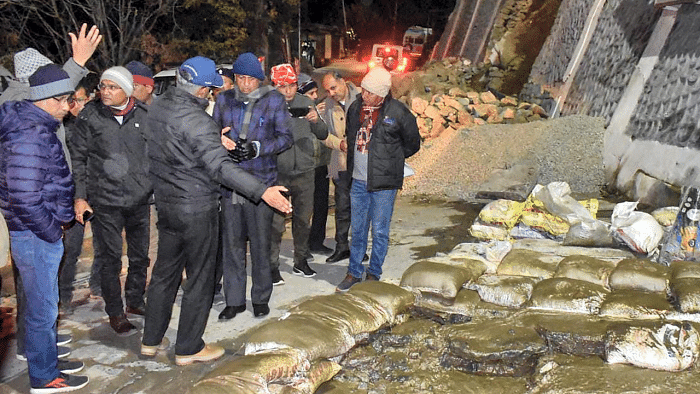
A variety of factors both anthropogenic and natural have led to the subsidence of Joshimath, as per experts.
Nestled in the foothills of the Himalayas, Joshimath, a tiny town in Uttarakhand is the base camp for Himalayan expeditions and is known for its spiritual prowess.
But now, it is in the news for the wrong reasons. Its residents have brought to the notice of the authorities the land beneath the town sinking and also cracks developing in the walls of the houses. Over 500 houses have been facing this issue.
Reasons for Joshimath sinking
The factors are not recent, they have built up over a long period of time, director of the Wadia Institute of Himalayan Geology Kalachand Sain told PTI.
“The three principal factors are Joshimath's vulnerable foundations as it was developed on the debris of a landslide triggered by an earthquake more than a century ago, its location in seismic zone V which is more prone to earthquakes besides gradual weathering and water percolation which reduce the cohesive strength of the rocks over time,” Sain told the publication.
Increased building, hydropower projects, and the extension of the National Highway have made the town more susceptible to calamities.
The going down of the Himalayan rivers and heavy rainfall which is characteristic of the area beside the flashfloods in Rishiganga and Dhauliganga rivers last year may also have worsened the situation, he said.
As Joshimath is the gateway to Badrinath, Hemkund Sahib and skiing destination Auli haphazard construction activities have been going on in the area for a long time without thinking about the pressure the town is capable of coping with, he said, adding this may also have led to cracks appearing in the houses there.
"Hotels and restaurants have mushroomed everywhere. The pressure of population and the size of the crowd of tourists has also increased manifold," he said.
Road for revival
Experts are of the opinion that the population must be sent to a safer ground first. Later, all construction activities and hydroelectric projects must be ended immediately.
"Many houses in the town are unlikely to survive and people living in them must be shifted to safe locations as life is precious," he said.
After the evacuation of people in affected areas to safety, microzonation of the town, replanning of its drainage system and rainwater outlets besides assessment of rock strength among others should be undertaken, Sai suggested.
(With PTI inputs.)